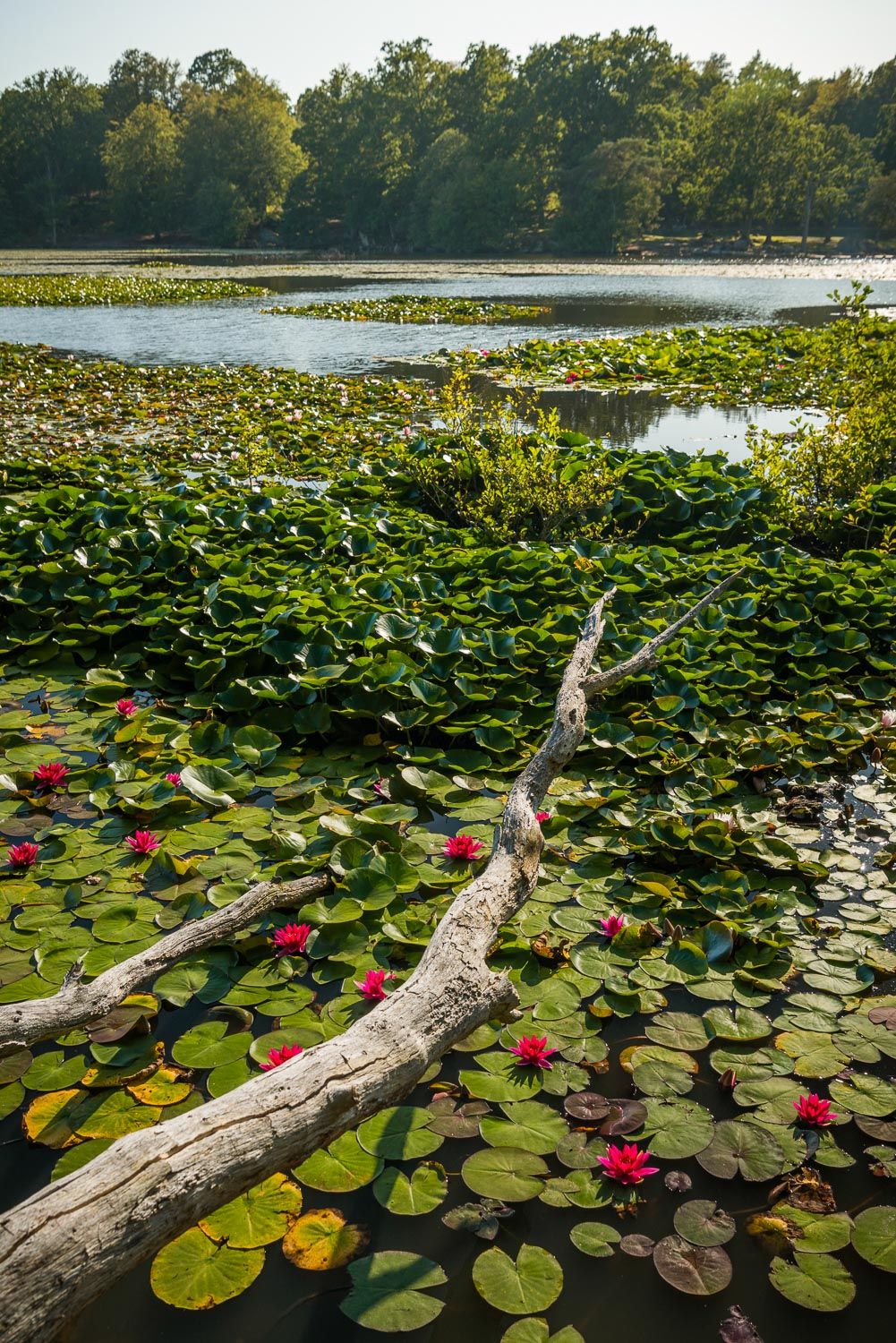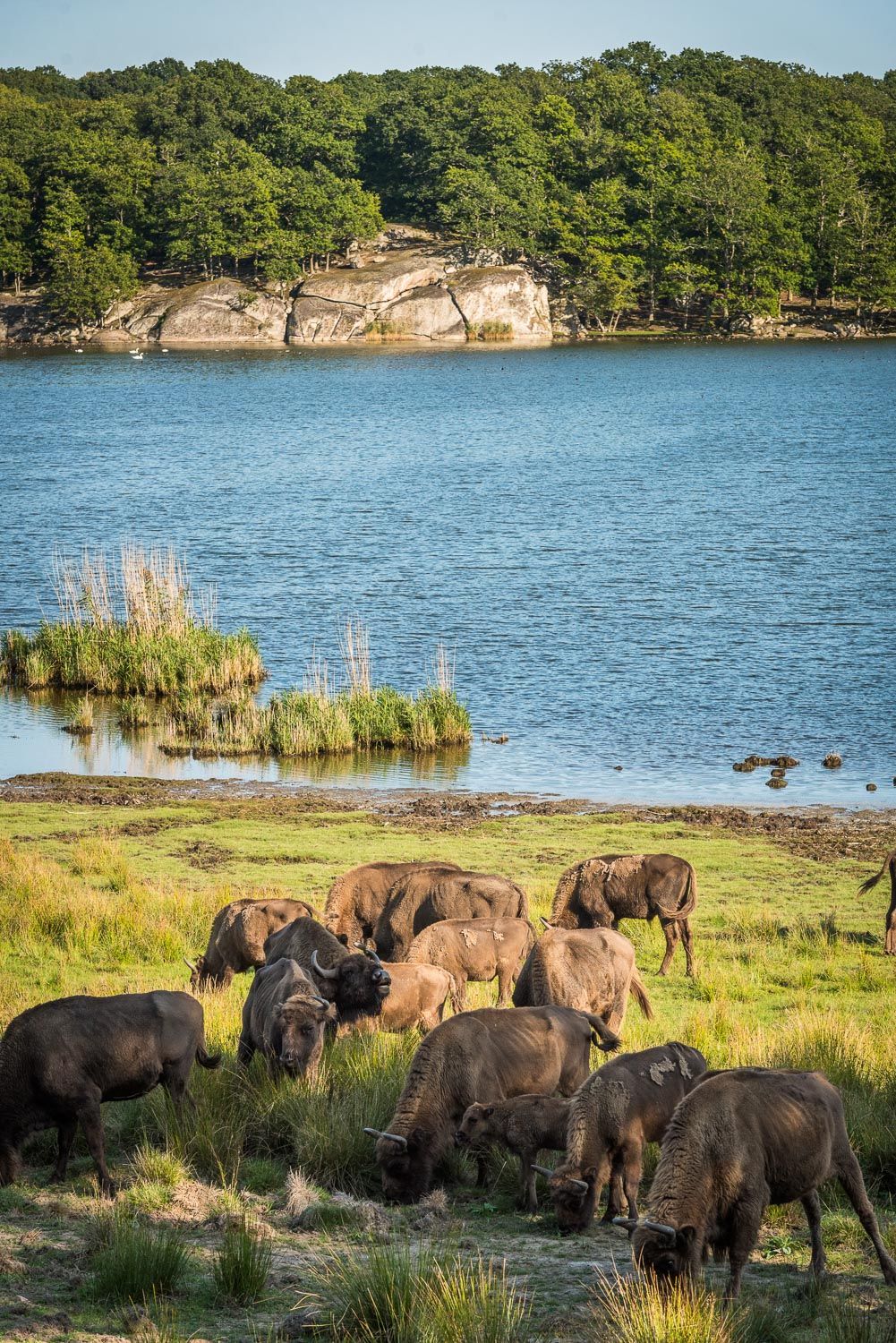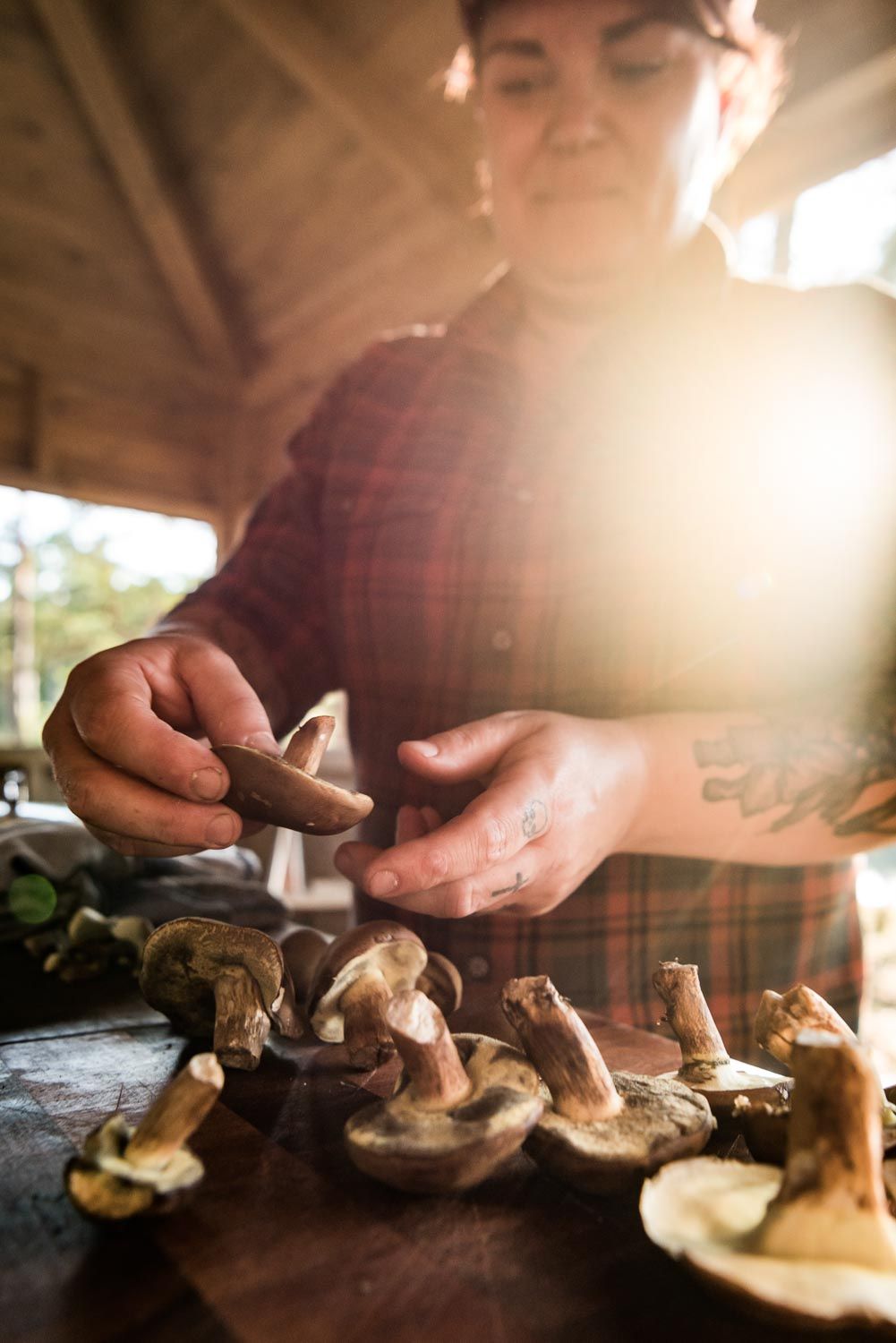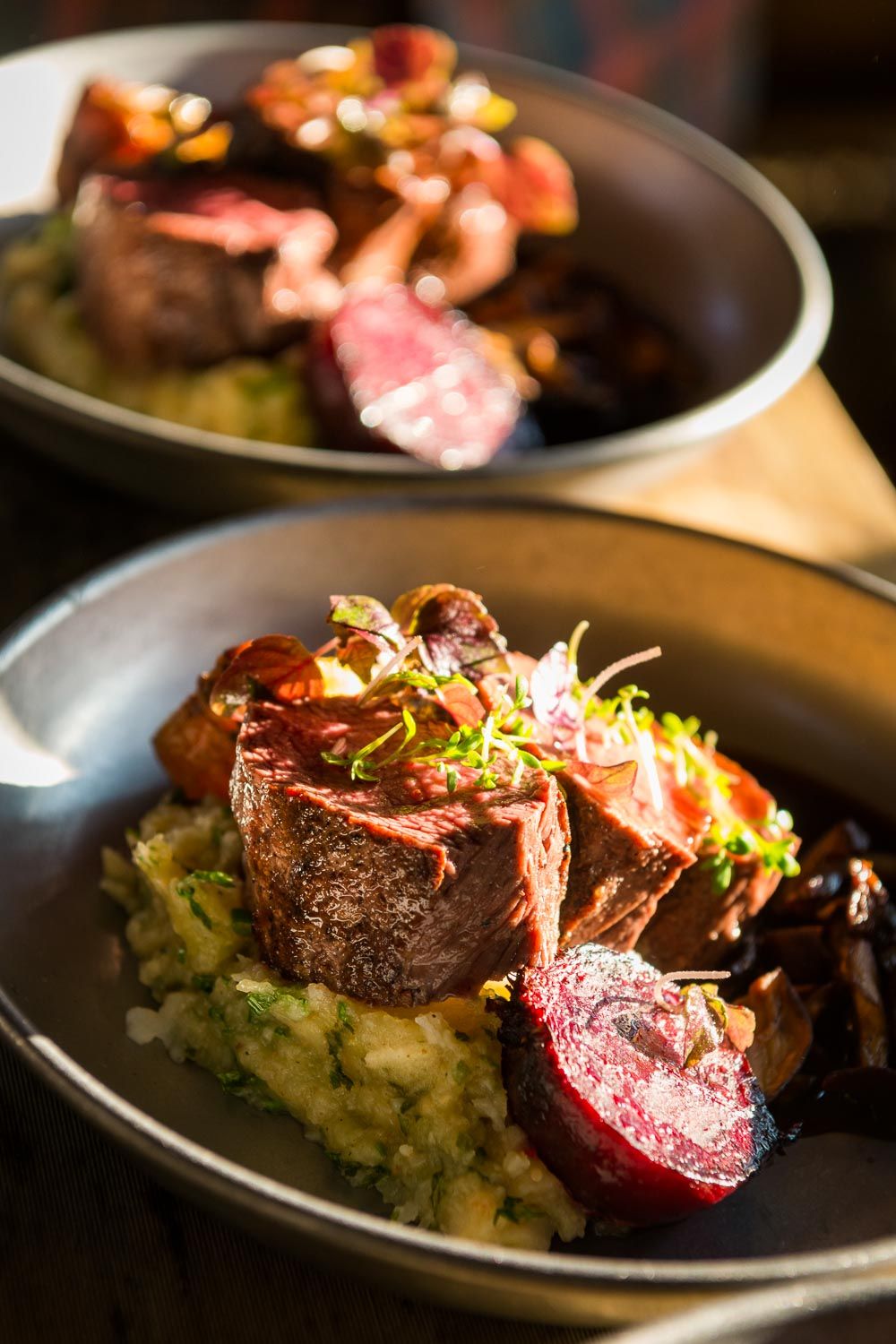Discover the Baltic Sea trails
Blekinge Archipelago, Sweden
Ten thousand years ago, the last time the ice melted, this archipelago in the province of Blekinge in Sweden was born, consisting of over 1000 islands and 90 km of coastline. Today, part of it is an UNESCO biosphere reserve. A network of trails, called ARK56, guides you through this amazing part of our planet.

Bison
Eriksberg in Blekinge is home to over 200 species of birds, I later learn from Per-Arne Olsson (54). He turns out to be a man of numbers. “We have almost 1200 kinds of butterflies, 16 species of bat, and 117 species of feathermosquito”.
– “Mosquitoes!?!” I interrupt.
“They don’t bite,” Olsson reassures me. He points in the sky. “With a bit of luck, we might also see an osprey today.” He lowers his finger. There is a lake in front of us with six types of water lilies floating in it: yellow, white, pink.
Just in front of us a bison crosses over the road. Fortunately, I was safe in the car. A colossal beast of 500 kilos. Do not panic!
Where are we exactly?
We have just entered the Eriksberg Nature Reserve, a 925-hectare private wildlife park where Olsson has been CEO for 18 years. He knows every animal by name, including their nickname, I suspect. Just in front of us a bison crosses over the road. Fortunately, I was safe in the car. A colossal beast of 500 kilos. Do not panic. Olsson knows who she is: “an old lady.”
Our American videographer Josiah is mind blown: “buffalos, are you’re kidding?” He flew all the way to the Old World, and it turns out that there are bison there, his favourite animal as a child. Modestly he asks: “is it true that they are much smaller than back home?”

Olsson nods: “the European bison, also called lowland wisent, is the smaller cousin of the American Great Bison Belt resident. There are 55 European bison here. You’ll find 5,000 in the wild, spread throughout Europe. If you add the ones in private parks to that figure, including those found in Eriksberg, you reach a total of 7,000 European bison. That sounds like a lot, but to put this in perspective, there are more black rhinos in the world than there are European bison.
A sea eagle is circling above
What about moose, I want to know? Will we get to see them too? “There are only animals here that have always lived in this area: red deer, fallow deer, wild boar, mouflon,” Olsson says. And European bison so it seems. The Swedish Big Five, you might say, although the moose is missing. It would appear that the vegetation here is unsuitable for this Swedish icon.
A legend
Bengt Berg was one of the founding fathers of the park. Speaking of icons, as well as being an ornithologist Bengt Magnus Kristoffer Berg (1885-1967) was one of the world’s first nature photographers, starting his photographic career in 1910. He was talented and had guts too. He photographed bearded vultures in the The Himalayas out of a hot air balloon. His work was highly regarded as the following tale proves. Back to the year 1925. While Charlie Chaplin’s The Gold Rush and the legendary film Pantserkruiser Potjomkin premiere in Berlin, people are queuing up for a completely different film. For four months in a row, people flocked to the Victoria Theatre, one of the biggest movie-theatres of the time, with room for 2600 people.

The theatre is completely sold out twice a day. The speaker is the Swedish nature filmmaker Bengt Berg. And as the audience watches animals they’ve never seen before, such as shoebill storks from South Sudan, a soft voice tells his tales. A man who has been everywhere: Africa, India, Bhutan. A world traveller, nature film pioneer and above all an animal lover. The man who founded the Eriksberg Nature Reserve in 1938. Thanks to him, there are sea eagles left in Sweden. And greylag geese, the golden eagle and the mute swan. A true conservation legend.
“There are only animals here that have always lived in this area: bison, red deer, fallow deer, wild boar and mouflon”
A man who spontaneously joins us on our safari reminds me a bit of Bengt Berg in some ways. “Nice to meet you, Yngve Bergqvist is the name.” Just a tad later, the penny drops: he is the founder of the Swedish Ice hotel. The businessman and visionary, dressed for the occasion, is on the board of the Eriksberg Nature Reserve. In his hand, he has a glass of red wine. On his head, he wears a cigar-brown cap, vintage style. We look out over the lake together, in silence.
We are on the terrace of a glamping tent, where you can stay for 560 euros per night. The architect-designed glamping tent looks like a film set, including retro binoculars. We are not staying the night here ourselves, but we do eat in the park in the evening. Outdoor chefs Nilsson and Palm prepare our meals. Both dressed in red-checkered shirts; they make us fallow deer sirloin. Eat whatever the land gives you, that’s the way they do things here. You don’t go to the butcher for an ounce of ground beef
when you’re in Eriksberg. You eat freshly hunted deer.
Eriksberg Nature Reserve
Go on safari at Eriksberg in south-east Sweden and see wild animals in their proper environment. Red deer, fallow deer, Père David’s deer, European bison, wild boar and moufflon freely roam around in this unique nature reserve in the archipelago. At over nine square kilometers, Eriksberg is today one of northern Europe’s largest protected areas for wild life.
The Baltic Sea
With an area of 2941km2 (0.7% of the total area of the country), Blekinge is the second smallest province in Sweden. It has 90km of coastline and boasts more than a thousand islands, large and small. It borders the Baltic Sea: a sea that morphologically speaking is still young. The Baltic Sea has “only” existed since the sixth millennium BC. It was created when the Scandinavian ice sheet began to melt at the end of the last Ice Age, first in the form of a freshwater lake. It turned to ice once again, in what was called The Big Freeze, then this seawater started to rise, and everything became submerged. The Baltic Sea is still less salty than the North Sea, for example. Its brackish water is the result of the supply of river water. There is also hardly any tidal difference.
ARK56
Since 2011 the Blekinge archipelago has been an UNESCO biosphere reserve. The ocean of possibilities that the archipelago offers has been made accessible by the creation and waymarking of new trails and the renovation and digitalization of existing trails. All of which are now accessible in an app. All routes – hiking, biking & kayak trails – are linked with hubs for transport, grill spots, jetties, lovely lunch places, hotels and other places to stay. The app is easy to use, and available in English.











